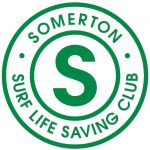The focus of IRB racing is to hone the abilities of IRB drivers and crew, with five events that generally revolve around the concept of IRB rescues and craft preparation.
While all the other competitive disciplines are having fun and competing throughout the summer months, the IRB are busy carrying out water safety. As a result, IRB racing takes place after “Aussies” – SLSA Australian Championships, with IRB drivers and crew able to compete at an Interclub level at the Australian IRB Championships in autumn/winter each year.
The main focus of IRB racing is to improve the abilities of IRB drivers and crew members. The five events that make up IRB racing generally revolve around the concept of IRB rescues and preparation.
IRB Rescue
Teams comprise of one driver, one crewperson and one patient. Crews and their IRB start on the water’s edge, proceed out to the turning buoys, retrieve the patient on the seaward side of their buoy and then return to shore.
IRB Tube Rescue
Teams comprise of one driver, one crewperson and one patient. Crews and their IRB start on the water’s edge and proceed out to the turning buoys. In order to rescue the patient, the crewperson must don a rescue tube and dive overboard to securely attach the tube to the patient. The crewperson swims back to the IRB and the driver assists both crewperson and patient into the IRB before returning to shore.
IRB Mass Rescue
Teams comprise of one driver, one crewperson and two patients. Crews and their IRB start on the water’s edge, proceed out to the turning buoys, retrieve the first patient on the seaward side of their buoy and then return to shore.
The first patient exits the IRB, the driver runs up the beach and around a flag/marker and then returns to the shore to assist the crewperson to turn the IRB around. They then restart the IRB and proceed out to sea, rescuing the final patient before returning to shore.
IRB Teams Rescue
Teams comprise of two drivers, two crewpersons and two patients. The concept is similar to the IRB Mass Rescue event, however a second driver and crewperson takes over control of the IRB after the first patient is rescued, and proceeds to rescue the second patient.
